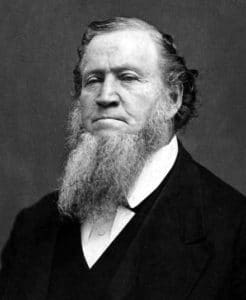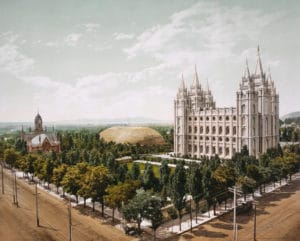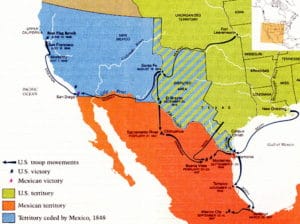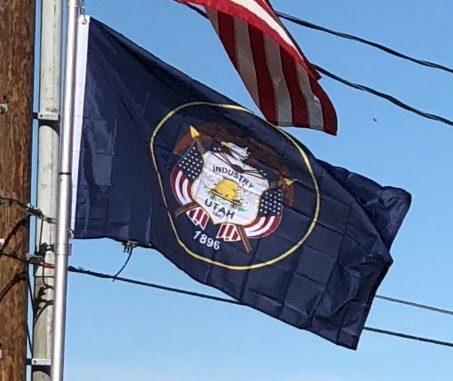In late 1824, Jim Bridger became the first known English-speaking person to sight the Great Salt Lake. Due to the high salinity of its waters, he thought he had found the Pacific Ocean; he subsequently learned this body of water was a giant salt lake. After the discovery of the lake, hundreds of American and Canadian traders and trappers established trading posts in the region. In the 1830s, thousands of migrants traveling from the Eastern United States to the American West began to make stops in the region of the Great Salt Lake, then known as Lake Youta.
Latter Day Saint Settlement:
Following the death of Joseph Smith in 1844, Brigham Young, as president of the Quorum of the Twelve, became the effective leader of the Church of Jesus Christ of Latter-day Saints in Nauvoo, Illinois. To address the growing conflicts between his people and their neighbors, Young agreed with Illinois Governor Thomas Ford in October 1845 that the Mormons would leave by the following year.

Brigham Young and the first band of Mormon pioneers reached the Salt Lake Valley on July 24, 1847. Over the next 22 years, more than 70,000 pioneers crossed the plains and settled in Utah. For the first few years, Brigham Young and the thousands of early settlers of Salt Lake City struggled to survive. The arid desert land was deemed by the Mormons as desirable as a place where they could practice their religion without harassment.
The Mormon settlements provided pioneers for other settlements in the West. Salt Lake City became the hub of a “far-flung commonwealth” of Mormon settlements. With new church converts coming from the East and around the world, Church leaders often assigned groups of church members as missionaries to establish other settlements throughout the West. They developed irrigation to support fairly large pioneer populations along Utah’s Wasatch front. Throughout the remainder of the 19th century, Mormon pioneers established hundreds of other settlements in Utah, Idaho, Nevada, Arizona, Wyoming, California, Canada, and Mexico – including in Las Vegas, Nevada; Franklin, Idaho; San Bernardino, California; Mesa, Arizona; Star Valley, Wyoming; and Carson Valley, Nevada.

Young had an expansionist’s view of the territory that he and the Mormon pioneers were settling, calling it Deseret – which according to the Book of Mormon was an ancient word for “honeybee”. This is symbolized by the beehive on the Utah flag, and the state’s motto, “Industry”.
Utah was Mexican territory when the first pioneers arrived in 1847. Early in the Mexican–American War in late 1846, the United States had taken control of New Mexico and California. The entire Southwest became U.S. territory upon the signing of the Treaty of Guadalupe Hidalgo, February 2, 1848.

The treaty was ratified by the United States Senate on March 11. Learning that California and New Mexico were applying for statehood, the settlers of the Utah area applied for statehood with an ambitious plan for a State of Deseret.
Utah Territory (1850–1896):
The Utah Territory was much smaller than the proposed state of Deseret, but it still contained all of the present states of Nevada and Utah as well as pieces of modern Wyoming and Colorado. It was created with the Compromise of 1850, and Fillmore, named after President Millard Fillmore, was designated the capital. Salt Lake City replaced Fillmore as the territorial capital in 1856.
